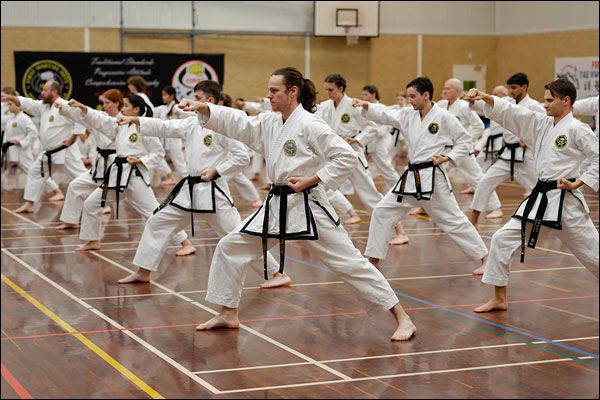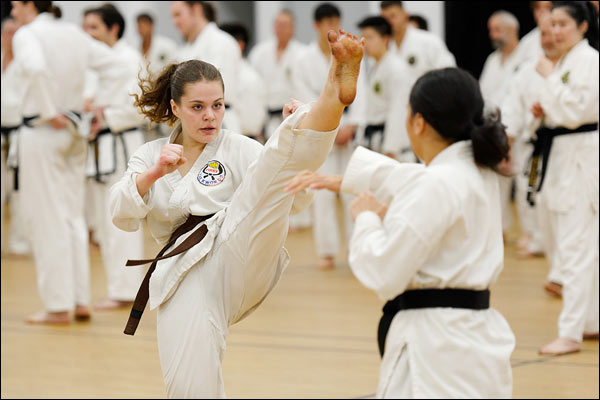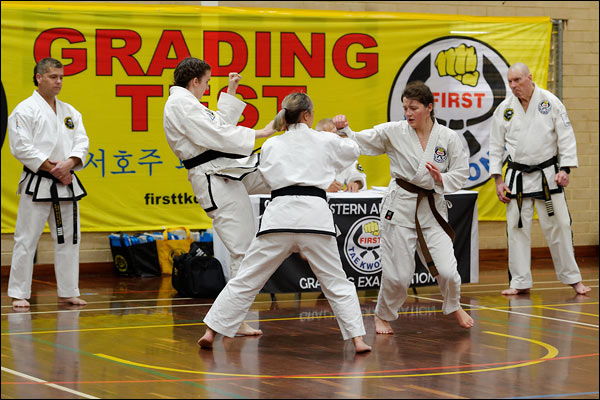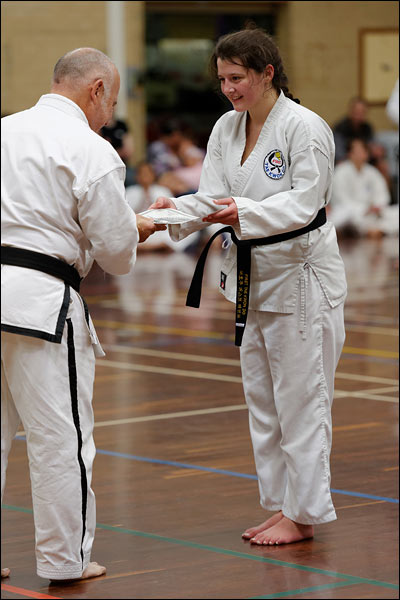
After many years of shooting almost exclusively with an 85 mm prime lens, I picked up my 70–200 mm telephoto zoom lens again, so visual perspective may look different in these photographs. (I will include some technical observations at the end of this post.)
First Tae Kwon Do students have continued training through the winter, and black belt candidates went through preliminary assessments in July 2023. Despite the cold weather, we had excellent attendance and the candidates underwent a rigorous testing of their physical fitness, technical skill, and determination over the course of two hours.



Only a couple of the candidates made it through to their black belt grading examinations in September 2023, along with the hundreds of coloured belt members undertaking their gradings.










Both candidates were successful, and duly received their black belt ranking and their black belts personally from Master Vernon Low, the master instructor and examiner of First Tae Kwon Do. They then received their black belt certificates from Western Australian Chief Instructor Dane Meade.





While the black belt gradings were certainly the highlight of the day, most of the time was allotted to the coloured belt gradings, along with demonstrations by black belt members and instructors.


Congratulations to all members who were promoted by Master Low in September. As always, any promotion in First Tae Kwon Do is the result of passing a test administered by an appointed examiner.
In terms of photographic technical points, I had to readjust to having zoom functionality available. While most people would use a zoom lens for general photography, I have used a prime lens almost exclusively for many years now. I do only a relatively small amount of photography these days, owing to workload on a few different fronts.
One thing I immediately noticed during post-processing was the geometric distortion (barrel or pincushion) in the images. To the casual eye, geometric distortion is probably not too offensive (and perhaps not even noticeable). Prime lenses are far simpler to optimise than zoom lenses, and distortion is normally something not seen except in the wide-angle focal lengths. Having stayed with prime lenses for so long, I was not surprised that the distortion of the 70–200 mm lens was as clear as day.
As I have shot more with this lens over the weeks, one thing I do appreciate about it is being able to reach out to a 200 mm focal length with ease, and with a relatively large f/2.8 aperture. This would be one of the classic portrait settings; I can only imagine how much better things would look when shot with Nikon’s highly regarded 200 mm f/2 lens … which carries a five figure price tag.